|
|
|
Cambridge University Press
|
'Publish or perish' is a well-established adage in academia. Never has the pressure on academics to publish been greater. Yet the prospect of writing a book can seem daunting, while the business of getting it published may be mystifying. Written by an expert in academic publishing, Writing Successful Academic Books provides a practical guide to both writing and getting published. It covers all stages of academic authorship from developing the initial idea for a book through to post-publication issues, showing how to avoid the common pitfalls and achieve academic and professional success through publication. Full of real life examples, including a sample book proposal, the book covers everything you need to know to build up an authorial career. This is an invaluable guide for academic authors — prospective or established — in all disciplines. |
|
Writing Well is a guide to expressive creative writing and effective professional prose. The author, a poet, writer, editor and teacher, explains the techniques required for stylish and readable writing. Everyone who wants to improve their writing can benefit from this book, which describes how to: identify topics that inspire you to write; get into the habit of writing regularly; develop ideas; construct effective arguments; choose words for maximum effect; use grammar correctly; structure sentences and paragraphs appropriately; write with integrity. The book is enriched by examples from great modern writers, and includes a variety of exercises and suggestions for writing activities. Mark Tredinnick practises what he preaches, making his book highly enjoyable as well as technically instructive. |
|
This intellectually rigorous introduction to international law encourages readers to engage with multiple aspects of the topic: as 'law' directing and shaping its subjects; as a technique for governing the world of states and beyond statehood; and as a framework within which several critical and constructivist projects are articulated. The articles situate international law in its historical and ideological context and examine core concepts such as sovereignty, jurisdiction and the state. Attention is also given to its operation within international institutions and in dispute settlement, and a separate section is devoted to international law's 'projects': protecting human rights, eradicating poverty, the conservation of resources, the regulation of international trade and investment and the establishment of international order. The diverse group of contributors draws from disciplinary orientations ranging from positivism to postmodernism to ensure that this book is informed theoretically and politically, as well as grounded in practice. |
|
The idea of human rights is rightly considered to be one of the very biggest of the big thoughts of the early twenty-first century. The object of this book is to capture a sense of the variety of the platforms within which human rights law is practised today and reflects the dynamic interrelationships that have grown up between these various levels. It also has a critical edge, where the chapters reflect on the way the subject has been handled in the authors sub-field, how it has achieved what has been expected (or has not) or produced unexpected side-effects, with judgments about the efficacy of human rights law (set against the standards of the field itself or some other goals) not being withheld where it is appropriate for these to be made. Written by world-class academics, this Companion will be essential reading for students and scholars of human rights law. |
|
Many of the traditions which we think of as very ancient in their origins were not in fact sanctioned by long usage over the centuries, but were invented comparatively recently. This book explores examples of this process of invention — the creation of Welsh and Scottish 'national culture'; the elaboration of British royal rituals in the nineteenth and twentieth centuries; the origins of imperial rituals in British India and Africa; and the attempts by radical movements to develop counter-traditions of their own. It addresses the complex interaction of past and present, bringing together historians and anthropologists in a fascinating study of ritual and symbolism which poses new questions for the understanding of our history. |
|
Hugh Kearney's classic account of the history of the British Isles from pre-Roman times to the present is distinguished by its treatment of English history as part of a wider 'history of four nations'. Not only focusing on England, it attempts to deal with the histories of Wales, Ireland and Scotland in their own terms, whilst recognising that they too have political, religious and cultural divides. This new edition endeavours to recognise and examine contemporary multi-ethnic Britain and its implications for 'four-nations' history, making it an invaluable case-study for European nationhood of the past and present. Thoroughly updated throughout to take into account recent social, political and cultural changes within Britain and examine the rise of multi-ethnic Britain, this revised edition also contains a completely new set of illustrations, including 16 maps. |
|
How and why do languages change? Where does the evidence of language change come from? How do languages begin and end? This introduction to language change explores these and other questions, considering changes through time. The central theme of this textbook is whether language change is a symptom of progress or decay. This book will show you how it is neither and that understanding the factors surrounding how language change occurs is essential to understanding why it happens. This updated edition remains non-technical and accessible to readers with no previous knowledge of linguistics. |
|
Why do we read literature and how do we judge it? C. S. Lewis's classic An Experiment in Criticism springs from the conviction that literature exists for the joy of the reader and that books should be judged by the kind of reading they invite. He argues that 'good reading', like moral action or religious experience, involves surrender to the work in hand and a process of entering fully into the opinions of others: 'in reading great literature I become a thousand men and yet remain myself'. Crucial to his notion of judging literature is a commitment to laying aside expectations and values extraneous to the work, in order to approach it with an open mind. Amid the complex welter of current critical theories, C. S. Lewis's wisdom is valuably down-to-earth, refreshing and stimulating in the questions it raises about the experience of reading. |
|
Shakespeare's poems, aside from the enduring appeal of the Sonnets, are much less familiar today than his plays, despite being enormously popular in his lifetime. This Introduction celebrates the achievement of Shakespeare as a poet, providing students with ways of understanding and enjoying his remarkable poems. It honours the aesthetic and intellectual complexity of the poems without making them seem unapproachably complicated, outlining their exquisite pleasures and absorbing enigmas. Schoenfeldt suggests that today's readers are better able to analyze aspects of the poems that were formerly ignored or the source of scandal — the articulation of a fervent same-sex love, for example, or the incipient racism inherent in a hierarchy of light and dark. By engaging closely with Shakespeare's major poems — 'Venus and Adonis', 'Lucrece', 'The Phoenix and the Turtle', the Sonnets and 'A Lover's Complaint' — the Introduction demonstrates how much these extraordinary poems still have to say to us. |
|
King John had a distinguished life on the eighteenth and nineteenth-century stage, and this edition presents the fullest account of its stage history. The play's political importance, its rich and varied language, and its skillful design suggest that King John deserves a high place among Shakespeare's historical tragedies. The textual analysis includes examination of several disputed emendations to the text. In the appendix, Beaurline surveys the arguments about the dating of Shakespeare's King John and the anonymous Troublesome Reign of King John, presenting new evidence for the possibility that Shakespeare's play was written first. |

|
For this updated edition, David Bevington has included in his introductory section a thorough consideration of recent critical and stage interpretations of Antony and Cleopatra, demonstrating how the theatrical design and imagination of this play make it one of Shakespeare's most remarkable tragedies. The edition is attentive throughout to the play as theatre: a detailed, illustrated account of the stage history is followed, in the commentary, by discussion of staging options offered by the text. The commentary is especially full and helpful, untangling many obscure words and phrases, illuminating sexual puns, and alerting the reader to Shakespeare's shaping of his source material in Plutarch's Lives. This is a scholarly edition, but its scholarship is not intrusive: it will also satisfy those approaching the play for the first time. |

|
This generously annotated updated edition of Coriolanus provides a thorough reconsideration of Shakespeare's remarkable, and probably his last, tragedy. A substantial introduction situates the play within its contemporary social and political contexts — dearth, riots, the struggle over authority between James I and his first parliament, the travails of Essex and Ralegh — and pays particular attention to Shakespeare's shaping of his primary source in Plutarch's Lives. It presents a fresh account of how the protagonist's personal tragedy evolves within Shakespeare's most searching exploration of the political life of a community. The edition is alert throughout to the play's theatrical potential, while the stage history also attends to the politics of performance from the 1680s onwards, including European productions following the Second World War. A new introductory section by Bridget Escolme covers recent productions of Coriolanus, and criticism of the last ten years, with particular focus on gender and the play's politics. |

|
This is the most extensively annotated edition of Macbeth currently available, offering a thorough reconsideration of one of Shakespeare's most popular plays. A full and accessible updated introduction studies the immediate theatrical and political contexts of Macbeth's composition, especially the Gunpowder Plot and the contemporary account of an early performance at the Globe. It treats such issues as whether the Witches compel Macbeth to murder; whether Lady Macbeth is herself in some sense a witch; whether Banquo is Macbeth's accomplice in crime; and what criticism is levelled against Macduff. Several possible new sources are suggested, and the presence of Thomas Middleton's writing in the play is proposed. An extensive, well-illustrated account of the play in performance examines several cinematic versions, such as those by Kurosawa and Roman Polanski, and a brand new introductory section on recent performances and adaptations brings the edition completely up-to-date. |
|
This new edition of Shakespeare's Cymbeline takes full account of the critical and historical scholarship produced in the late twentieth century. It foregrounds the elements of romance, tragicomedy and Jacobean stagecraft which together shape the play; it also acknowledges the postmodern indeterminacy of the play's key moments. Martin Butler breaks with the legacy of the sentimental Victorian reading of the heroine, Innogen, which still exerts some hold on production and interpretation today, and has given greater space than his predecessors to the politics of 1610, especially to questions of British union and nationhood. The play has been freshly edited from the text in the 1623 folio, with some interesting textual choices, and has a detailed commentary on linguistic and historical aspects of the text. There is also a full treatment of the play's stage history, from 1610 to the present day. |
|
Love's Labour's Lost, the first work to bear Shakespeare's name on its title page, differs greatly from his other early plays both for its highly unorthodox ending and its extraordinary use of language. This new edition presents a highly readable, modernised text of the play, freshly edited from the first quarto published in 1598. A thorough but concise scholarly and critical commentary provides exciting new perspectives on Love's Labour's Lost, and a comprehensive introduction discusses the significant elements of the play and its place in theatrical history. New critical trends are reflected in the special attention paid to the play's performance history since 1950, including films and adaptations, with illustrations of several productions. Engaging and illuminating, this will be an invaluable guide for seasoned scholars as well as students approaching the play for the first time. |
|
This new edition of Shakespeare's The Merry Wives of Windsor focuses on a theatrical understanding of the play. While emphasising the liveliness of the play in stage terms, David Crane also claims that this citizen comedy needs to be taken much more seriously than in the past, as an expression of Shakespeare's fundamental understanding of human life, conveyed centrally in the character of Falstaff. In the process he also examines Shakespeare's free and vigorous use of different linguistic worlds within the play. The revision of this edition includes a response to some current arguments about the dating of Merry Wives, and also considers how recent productions bear upon the critical and theatrical account Crane gives of the play. |
|
Troilus and Cressida, long considered one of Shakespeare's most problematic plays, is both difficult and fascinating. Largely neglected during the eighteenth and nineteenth centuries it has recently proved popular and rewarding on the stage as well as in the study. This edition questions certain received ideas about the play's text, especially the relationship between quarto and folio and offers several new readings of old problems. Dawson's textual choices are often surprising but at the same time carefully grounded. He views the play from a performance perspective — both in the commentary as well as in the detailed section on stage history in the introduction. The introduction also covers the cultural context in which the play was written, probes the controversy about its early performance and provides extensive analysis of character, language, genre and contemporary significance. |
|
Over the last two decades there has been a resurgence of theatrical interest in Shakespeare's Pericles, which has been rescued from comparative neglect and is now frequently performed. This development is charted in the introduction to this edition, which differs radically from any other currently available. Doreen DelVecchio and Antony Hammond reject the current orthodoxies that the text is seriously corrupt and that the play is of divided authorship. They show how the 1609 quarto has features in common with the first quarto of King Lear, now widely regarded as being based on Shakespeare's manuscript. Likewise they regard the arguments concerning divided authorship as unproven and misleading. Instead they show the play to be a unified aesthetic experience. |
|
Penny Gay has written a new Introduction to this updated edition of Shakespeare's popular comedy. She stresses the play's theatricality, its elaborate linguistic games and its complex use of Ovidian myths. In addition, Gay analyzes its delicate balancing of romance and realism and exploration of gender, sexuality and identity. |

|
The Comedy of Errors has been popular on the stage during the last three centuries and has proved itself admirably suited to adaptation as pure farce and musical spectacle. For this updated edition, Ros King has provided a completely new Introduction to the existing text and commentary, in which she argues that the play cannot be regarded merely as a farcical romp based on a classical model, but belongs to the critically misunderstood genre of tragi-comedy. In stressing the seriousness which underlies the story, the Introduction picks out the play's religious imagery for special attention, whilst also engaging fully with the play's deft lightness of touch and its continuing popularity in the theatre. A fresh Reading List guides the reader towards further study. |
|